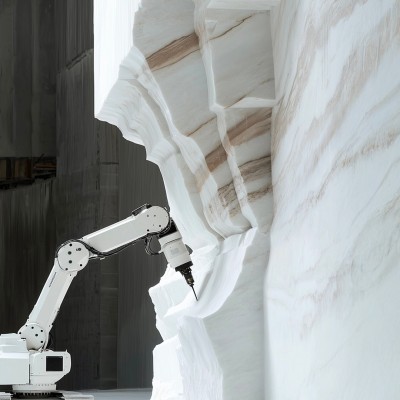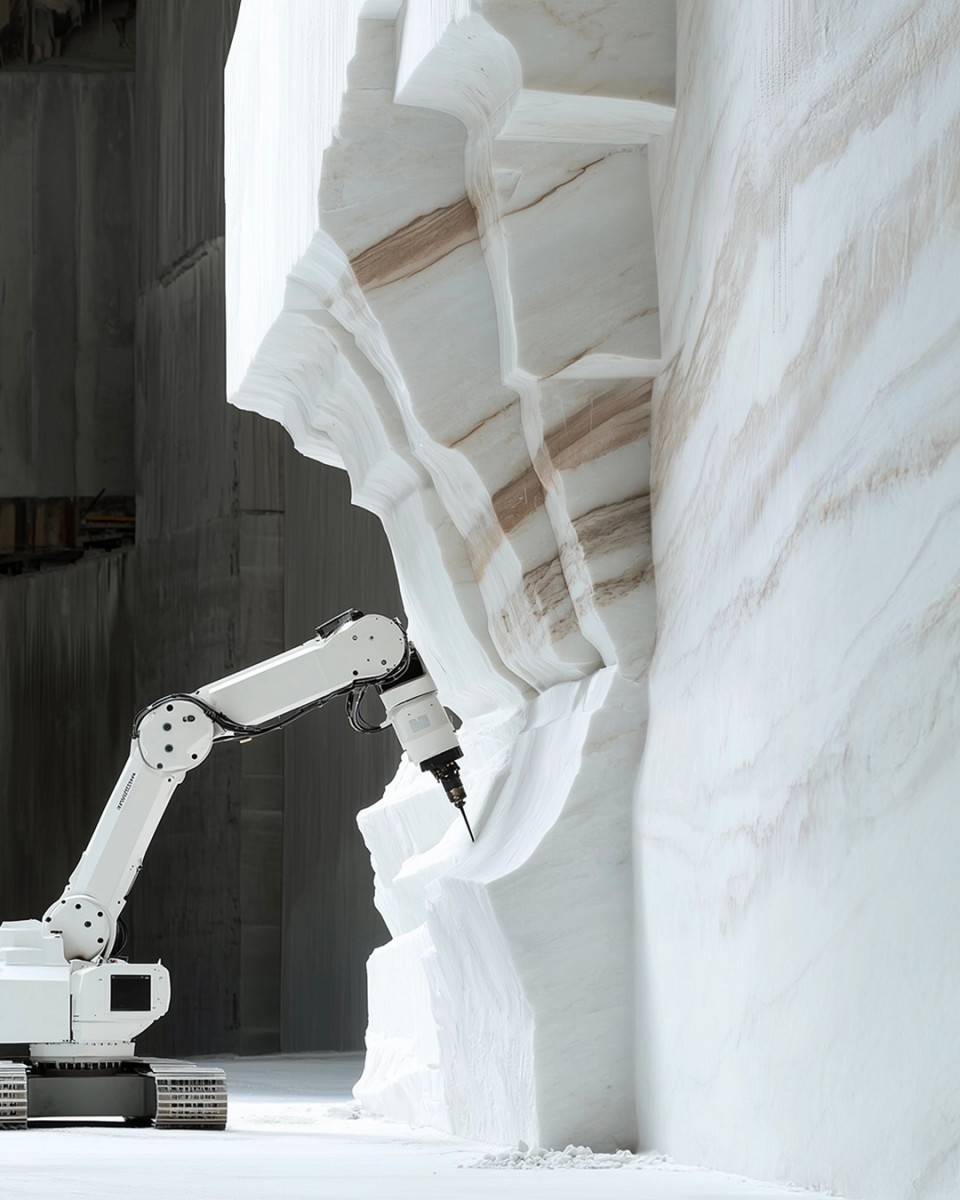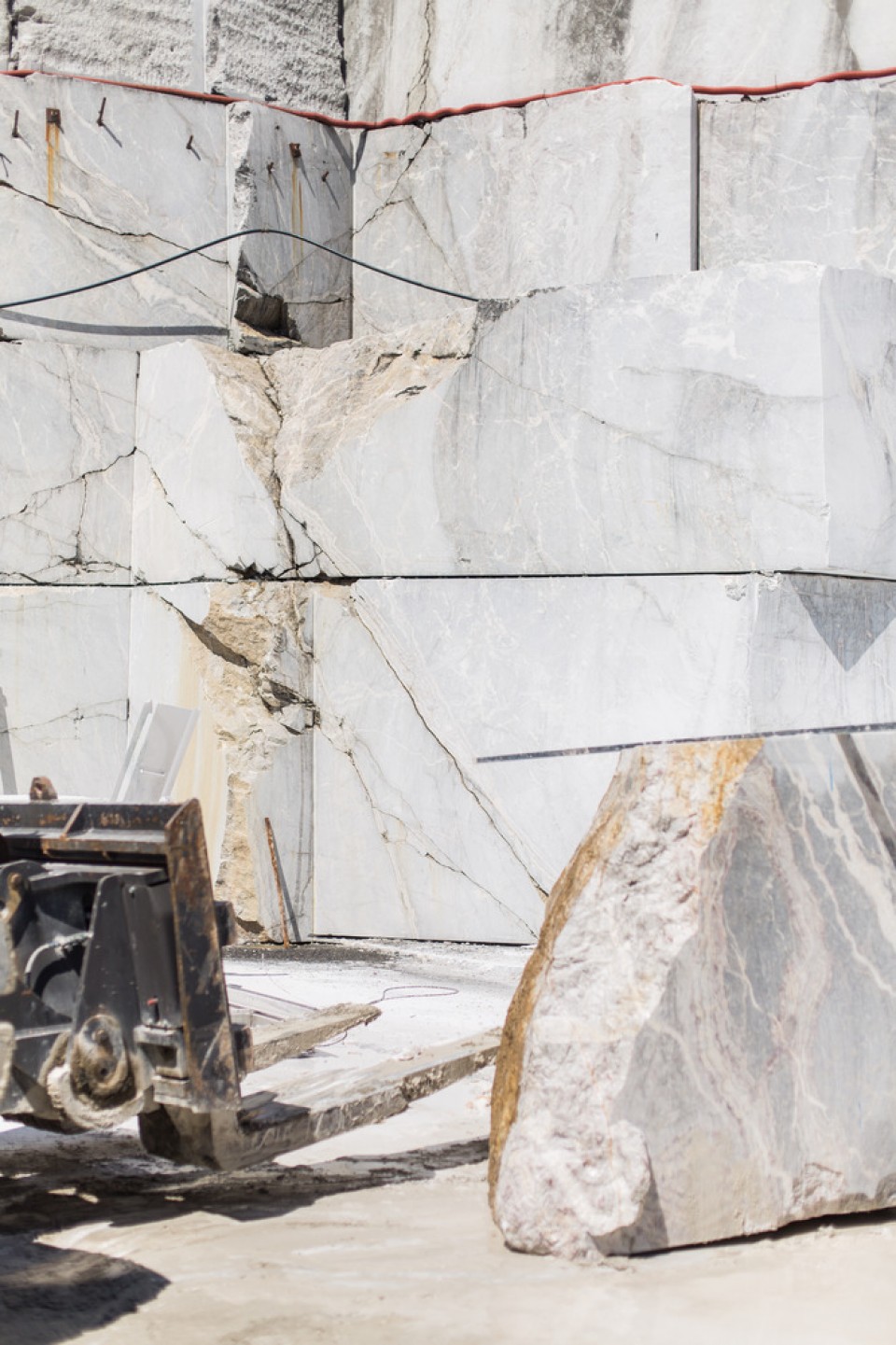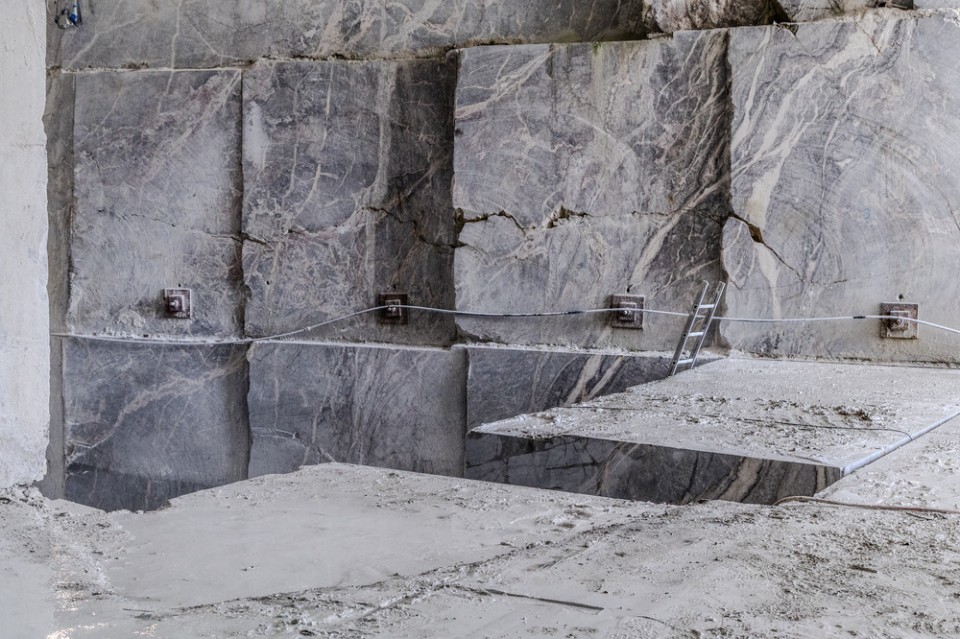You are here: Via Santa Marta 10
Art+Design
5vie event
physical event
Info
Via Santa Marta 10
Via Santa Marta 10
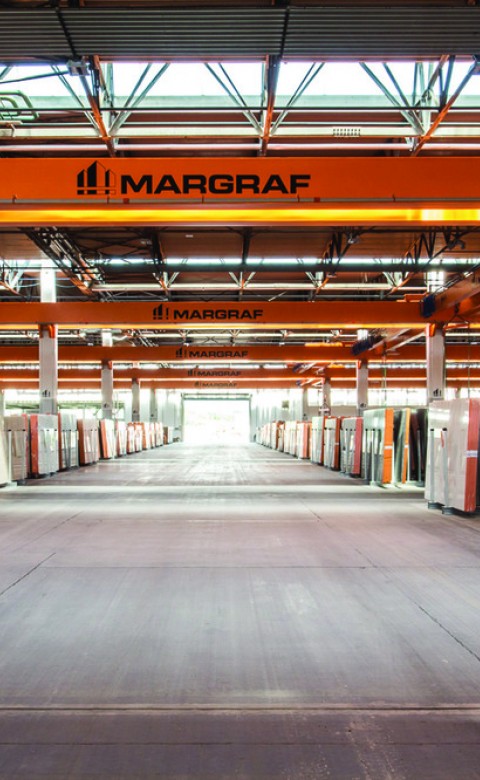
On the occasion of its debut at Milan Design Week, Margraf, an Italian leader in the marble
industry, presents CRASH, an installation designed by Hannes Peer Architecture at Spazio
BIG Santa Marta, located in the historic 5VIE district. This ambitious project represents the
meeting point between the Milanese studio, led by architect Hannes Peer, known for its
conceptual and multidisciplinary approach blending architecture, design, and theoretical
research, and Margraf, a company with over a century of experience in marble processing
through innovation and craftsmanship. The result is a work that pushes the boundaries between
material and meaning.
CRASH redefines the perception of marble—traditionally seen as a symbol of stability and
perfection—by presenting it as an instrument of rupture and revelation, far from its
conventional decorative role. The installation explores collision as both a conceptual and
physical force, reshaping objects and leaving visible traces of a profound interaction. The marble,
bending and detaching from the wall, challenges its inherent stoic solidity, interrupting the
architecture like a deliberate mistake. These "anomalies," though unnatural, appear organic,
transforming the marble into an autonomous, living entity that breaks free from rigid historical
expectations. It defies such constraints, bending and contorting to escape its traditional function,
as if awakening from a long period of submission.
The project draws inspiration from the works of artists such as Michelangelo, Luciano Fabro,
and Isamu Noguchi, who view fracture as an opportunity for reinvention and revelation. From
Michelangelo’s unfinished works to Fabro’s challenge to the solidity of stone to express emotion,
to Noguchi’s playful deconstruction of traditional sculpture, CRASH continues this legacy of
creative disruption.
Starting at the entrance, the visitor is welcomed into a space reminiscent of a quarry, where
marble twists into a cavernous formation before evolving through the space. It no longer
accepts its fate as a "vertical slab," but instead slides down to the ground under the weight of its
own mass or suddenly disrupts its natural logic. This culminates in the installation’s centrepiece,
which lends its name to the project: a monumental marble slab defies its own nature, bending
and crumbling in a frozen moment, as if the material were rewriting the laws of its existence. The
tension between marble’s solidity and unpredictability invites the viewer to find beauty in
imperfection and transformation. In CRASH, every mistake and unexpected event is not a flaw,
but a vital part of the creative process, celebrating fragility and the richness of imperfection.
CRASH thus serves as a reflection on the dynamism and unpredictability of the creative process,
where tradition and innovation collide, resulting in a work that transcends expectations. It
invites us to see marble not as a static material, but as a living substance in constant
evolution. In its fractures, dents, and accidents, the project underscores that creation is rarely
linear, but arises from a series of collisions, impacts, and unforeseen outcomes. The result is a
space where destruction and transformation converge, where every mark bears the memory of
its creation, and where marble—a material that has endured for millennia—becomes a metaphor
for the fleeting and fragile beauty of existence.
